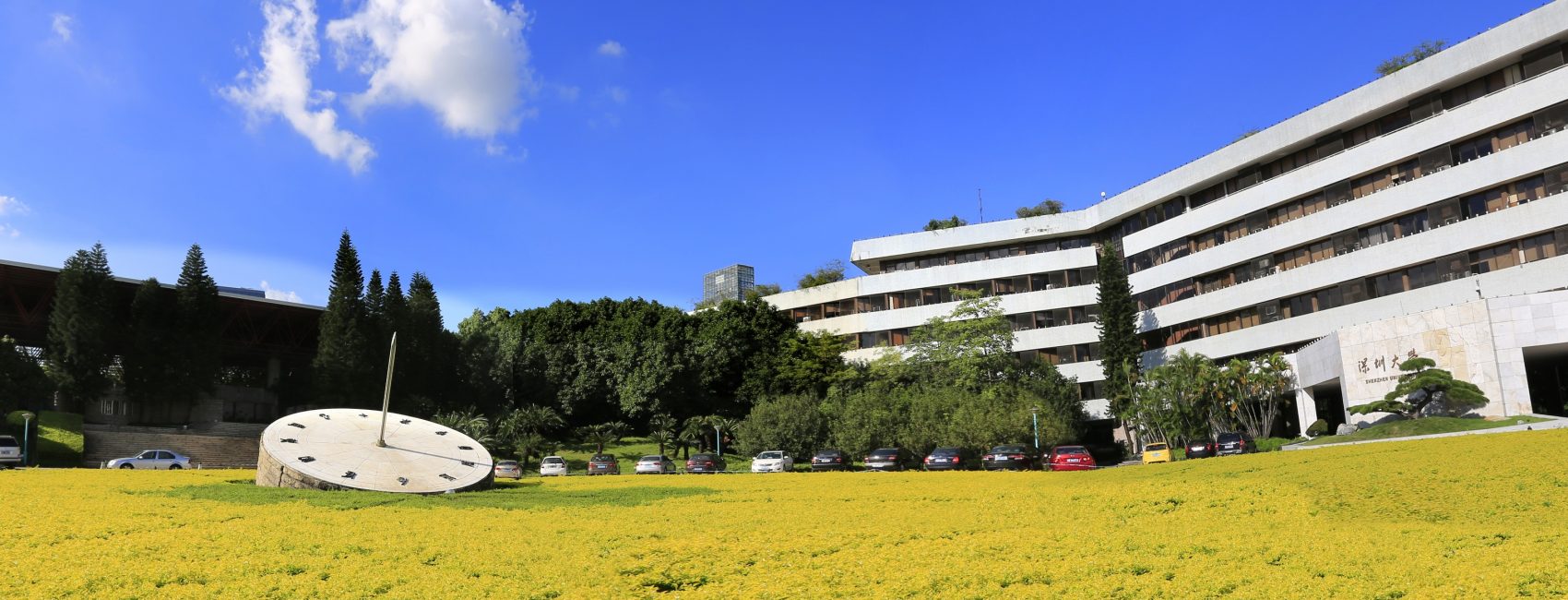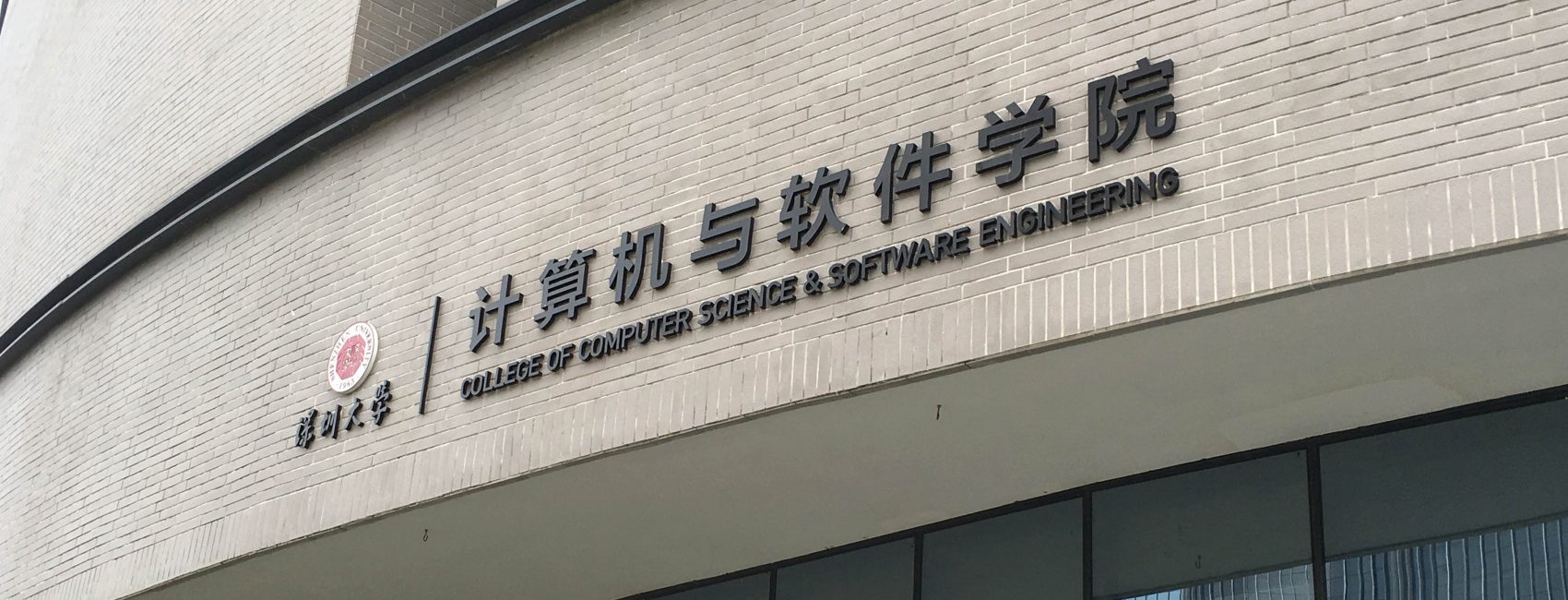Plenaries-Keynotes
Tianyou Chai
Development directions of industrial artificial intelligence
Saturday December 19, 08:50-09:30
Guangren Duan
Tracking control in satellite optical communication
— A parametric comprehensive design
Saturday December 19, 09:30-10:10
Bin Jiang
Adaptive fault detection and accommodation with flight control applications
Saturday December 19, 10:20-10:50
Hong Qiao
Brain-inspired intelligent robotics
Saturday December 19, 10:50-11:20
Hong Liu
New generation AI technology for public service robots
Saturday December 19, 11:20-11:50
C. L. Philip Chen
Stacked broad learning system: from incremental
flatted structure to deep model
Sunday December 20, 08:30-09:00
Jianru Xue
Driving decision-making-a hybrid-augmented intelligent approach
Sunday December 20, 09:00-09:30
Yuanqing Xia
Nonlinear control design for robotic systems subjected to constraints
Sunday December 20, 09:30-10:00
Lianqing Liu
Biosyncretic robotics for enhanced sensing, actuation and intelligence
Sunday December 20, 10:10-10:40
Yongde Zhang
Precise puncture strategy of prostate radioactive seed implantation robot
Sunday December 20, 10:40-11:10
Gary G. Yen
Knee-driven optimization and desion-making in evolutionary neural architecture search
Sunday December 20, 11:10-11:40
Plenary-Keynote Speakers
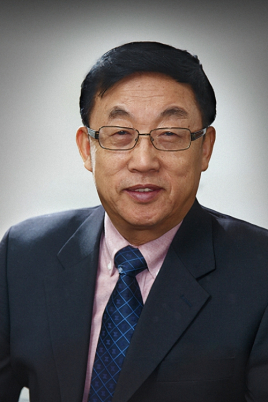
Tianyou Chai, Professor, Northeastern University, China
Development directions of industrial artificial intelligence
Abstract:
In this talk, the necessity of developing industrial artificial intelligence is proposed, by combining the role of industrial automation and information technology in the industrial revolution and the analysis of the current situation of decision-making, control, and operation management in the entire manufacturing and production process as well as the development direction of intelligent development. Then, the concept of industrial artificial intelligence technology is presented through the analysis of the meaning, development history and development direction of artificial intelligence technology, as well as the comparative analysis on the similarity and difference in core objectives, implementation methods, research objects, and research methods of automation and artificial intelligence research and application. Moreover, the directions, ideas and methods of research on industrial artificial intelligence are proposed through the comparative analysis on research objects and objectives of industrial artificial intelligence and industrial automation.
Biography: Tianyou Chai received the Ph.D. degree in control theory and engineering in 1985 from Northeastern University, Shenyang, China, where he became a Professor in 1988. He is the founder and Director of the Center of Automation, which became a National Engineering and Technology Research Center and a State Key Laboratory. He is a member of Chinese Academy of Engineering, IFAC Fellow and IEEE Fellow. He has served as director of Department of Information Science of National Natural Science Foundation of China from 2010 to 2018.
His current research interests include modeling, control, optimization and integrated automation of complex industrial processes.
He has published 240 peer reviewed international journal papers. His paper titled Hybrid intelligent control for optimal operation of shaft furnace roasting process was selected as one of three best papers for the Control Engineering Practice Paper Prize for 2011-2013. He has developed control technologies with applications to various industrial processes. For his contributions, he has won 5 prestigious awards of National Natural Science, National Science and Technology Progress and National Technological Innovation, the 2007 Industry Award for Excellence in Transitional Control Research from IEEE Multiple-conference on Systems and Control, and the 2017 Wook Hyun Kwon Education Award from Asian Control Association.
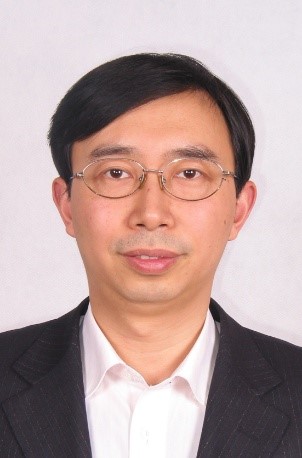
Bin Jiang, Professor, Nanjing University of Aeronautics and Astronautics, China
Adaptive fault detection and accommodation with flight control applications
Abstract: Based on the background of the flight control systems, this talk focuses on the topic of adaptive fault accommodation for complex dynamic systems, and introduces a series of results of fault detection, estimation and accommodation for continuous time, discrete time and hybrid systems. Their applications on the hot issues of satellites, near space vehicles, helicopters are discussed. Some perspectives along this direction are provided.
Biography: Bin Jiang received the Ph.D. degree in Automatic Control from Northeastern University, Shenyang, China, in 1995. He had ever been postdoctoral fellow, research fellow, invited professor and visiting professor in Singapore, France, USA and Canada, respectively. Now he is a Chair Professor of Cheung Kong Scholar Program in Ministry of Education and Vice President in Nanjing University of Aeronautics and Astronautics, China. He has served as Associate Editor or Editorial Board Member for a number of journals such as IEEE Trans. On Cybernetics, IEEE Trans. On Control Systems Technology; Neurocomputing, J. of Franklin Institute, etc. He is a Fellow of IEEE, Chair of Control Systems Chapter in IEEE Nanjing Section, a member of IFAC Technical Committee on Fault Detection, Supervision, and Safety of Technical Processes. His research interests include intelligent fault diagnosis and fault tolerant control and their applications to helicopters, satellites and high-speed trains.
He has been the principle investigator on several projects of National Natural Science Foundation of China. He is the author of 8 books and over 200 referred international journal papers and conference papers. He won National Natural Science Award of China in 2018.
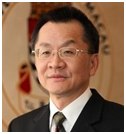
C. L. Philip Chen, Professor, South China University of Technology, China
Stacked broad learning system: from incremental flatted structure to deep model
Abstract: The Broad Learning System has been proved to be effective and efficient lately. In this talk, several deep variants of Broad Learning System (BLS) are reviewed, and a new adaptive incremental structure, Stacked Broad Learning System, is proposed. The proposed model is a novel incremental stacking of Broad Learning Systems. This invariant inherits the efficiency and effectiveness of Broad Learning System that the structure and weights of lower layers of Broad Learning Systems are fixed when the new blocks are added. The modified incremental stacking algorithm computes not only the connection weights between the new stacking blocks but also the connection weights of the enhancement nodes within the BLS block. Finally, experimental results on UCI datasets, MNIST dataset, NORB dataset, CIFAR-10 dataset, SVHN dataset, and CIFAR-100 dataset indicate that the proposed method outperforms the other state-of-the-art methods on both accuracy and training speed, such as Deep Residual Networks. The results also imply that the proposed structure could highly reduce the number of nodes and the training time of the original Broad Learning System in the classification task of some datasets.
Biography: C. L. Philip Chen (S’88–M’88–SM’94–F’07) is the Chair Professor and Dean of the College of Computer Science and Engineering, South China University of Technology and is a Chair Professor of the Faculty of Science and Technology, University of Macau, where he was the former Dean (2010-2017). He is a Fellow of IEEE, AAAS, IAPR, CAA, and HKIE; a member of Academia Europaea (AE), European Academy of Sciences and Arts (EASA). He received IEEE Norbert Wiener Award in 2018 for his contribution in systems and cybernetics, and machine learnings. He was a recipient of the 2016 Outstanding Electrical and Computer Engineers Award from his alma mater, Purdue University. He received IEEE Transactions on Neural Networks and Learning Systems best transactions paper award two times for his papers in 2014 and 2018, Franklin Taylor best conference award in IEEE Int’l Conf. on SMC 2019. He is a highly cited researcher by Clarivate Analytics in 2018, 2019, and 2020.
His current research interests include cybernetics, systems, and computational intelligence. Currently, he is the Editor-in-Chief of the IEEE Transactions on Cybernetics. He was the IEEE Systems, Man, and Cybernetics Society President from 2012 to 2013, the Editor-in-Chief of the IEEE Transactions on Systems, Man, and Cybernetics: Systems (2014-2019), an Associate Editor of the IEEE Transactions on AI, IEEE Trans on SMC: Systems, and IEEE Transactions on Fuzzy Systems. He received Macau FDCT Natural Science Award three times, Guaungdong Province Scientific and Technology Advancement Award in first-class in 2019.
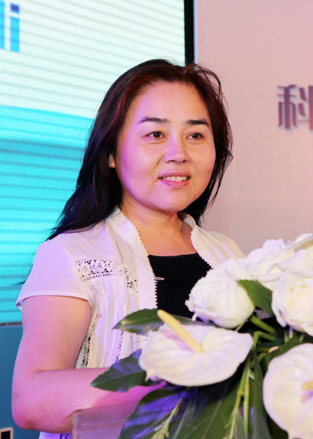
Hong Qiao, Professor, Institute of Automation, Chinese Academy of Sciences, China
Brain-inspired intelligent robotics
Abstract: Brain-inspired intelligence has become an important cutting edge of artificial intelligence. In recent years, many countries have launched brain projects and also established brain-inspired research centers. The interdisciplinary research between robotics and neuroscience will play an important role in the development of robotics, especially in “human-like” (intelligence, learning ability, flexibility and compliance in manipulation) and “interaction” (deeply understanding human motion and emotion, cooperating with human in a close and intimate manner) aspects.
Based on biological mechanisms, structures and functions, we carried out research activities in the integration of three main directions in robotics: (1) Brain-inspired perception and cognition: Introducing “memory and association”, “active cognition adjustment” and “spontaneous and dynamical cognition” into computational visual cognition models, the new models could achieve robust cognition, higher level cognition and dynamic updating, which could extend the applicable scenarios of robotic cognition, and provide basis of personalized services of robots. (2) Brain-inspired decision: Introducing neural mechanism of instinctive reactions into decision-making system, which could establish the trade-off between fast and slow reaction, and improve the precision of the movement and learning ability of robots. (3) human-like structure and brain-inspired control: human-like musculoskeletal robotic system provides stronger reliability, flexibility, and robustness than conventional robots. By introducing brain-inspired control mechanism into the system, it could perform human-like higher-level motion capacities.
Biography: Hong Qiao is deputy director of State Key Laboratory of Management and Control for Complex Systems, the group leader of Robotic Theory and Application (more than 50 researchers) in Institute of Automation, CAS. She is Winner of National Natural Science Funds for Distinguished Young Scholar, IEEE Fellow, IEEE Award Board Member and IEEE RAS AdCom Member. Prof. Qiao has made excellent contributions to interdisciplinary research between robotics and other areas and also among different directions in robotic area. She is an internationally-recognized and highly-cited pioneer researcher in high-precision robotic manipulation and biologically-inspired robotic cognition and manipulation. Her contributions are evidenced by more than 230 international journal and conference papers (150 SCI Indexed) with 2900+ total citation and H-Index of 28, and 56 patents. Her theory of “Attractive Region in Environment (ARIE)” —reported as “Qiao’s Concept” —has been widely applied in industrial robots in China. She was awarded Second Prize of the National Natural Science Award (the highest fundamental research award in China) in 2014. She also serves as AEs of 6 IEEE Transactions and Editor-in-chief of Assembly Automation (SCI). She established three industrialization bases in China for robotic assembly and detection. Some of the products became standardized and achieved best seller in local market. The base in Huizhou also got rewarded as New-type R & D institutions by local government.
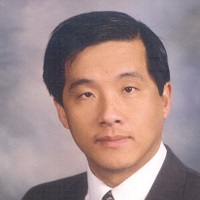
Gary G. Yen, Professor, Oklahoma State University, USA
Knee-driven optimization and desion-making in evolutionary neural architecture search
Abstract: Evolutionary computation is a branch of studying biologically motivated computational paradigms which exert novel ideas and inspiration from natural evolution and adaptation. The applications of population-based meta-heuristics in solving multiobjective optimization problems have been receiving a growing attention. To search for a family of Pareto optimal solutions based on nature-inspiring metaphors, Evolutionary Multiobjective Optimization Algorithms have been successfully exploited to solve optimization problems in which the fitness measures and even constraints are uncertain and changed over time. When encounter optimization problems with many objectives, nearly all designs perform poorly because of loss of selection pressure in fitness evaluation solely based upon Pareto optimality principle. During the last years, evolutionary algorithms have been adapted to address these challenges of curse of dimensionality. In addition, a minimum Manhattan distance approach to multiple criteria decision making in many-objective optimization problems was proposed. This procedure is equivalent to the knee selection in operation research. Given such a directive, knee-based evolutionary algorithms have also been exploited to address multimodal optimization, dynamic optimization, constraint optimization, robust optimization, and their applications in medical screening, portfolio management, and most recently the design of convolutional neural networks autonomously. In this talk, focal research on evolutionary neural architecture search will be detailed pertaining to the interest of audience.
Biography: Gary G. Yen received the Ph.D. degree in electrical and computer engineering from the University of Notre Dame in 1992. He is currently a Regents Professor in the School of Electrical and Computer Engineering, Oklahoma State University. His research interest includes intelligent control, computational intelligence, evolutionary multiobjective optimization, conditional health monitoring, signal processing and their industrial/defense applications. He has published over 175 journal papers, mostly in IEEE Transactions.
Gary was an associate editor of the IEEE Transactions on Neural Networks and IEEE Control Systems Magazine during 1994-1999, and of the IEEE Transactions on Control Systems Technology, IEEE Transactions on Systems, Man and Cybernetics (Parts A and B) and IFAC Journal on Automatica and Mechatronics during 2000-2010. He is currently serving as an associate editor for the IEEE Transactions on Evolutionary Computation (Impact Factor 11.169), IEEE Transactions on Cybernetics (Impact Factor 11.079), IEEE Transactions on Emerging Topics on Computational Intelligence, and most recently IEEE Transactions on Artificial Intelligence. Gary served as Vice President for the Technical Activities, IEEE Computational Intelligence Society in 2004-2005 and was the founding editor-in-chief of the IEEE Computational Intelligence Magazine, 2006-2009. He was elected to serve as the President of the IEEE Computational Intelligence Society in 2010-2011 and is elected as a Distinguished Lecturer for the term 2012-2014, 2016-2018, and 2021-2023. He received Regents Distinguished Research Award from OSU in 2009, 2011 Andrew P Sage Best Transactions Paper award from IEEE Systems, Man and Cybernetics Society, 2013 Meritorious Service award from IEEE Computational Intelligence Society and 2014 Lockheed Martin Aeronautics Excellence Teaching award. He is a Fellow of IEEE and IET.

Guangren Duan, Professor, Harbin Institute of Technology, China
Tracking control in satellite optical communication
— A parametric comprehensive design
Abstract: Accurate tracking and alignment control systems play a vital role in satellite optical communications. China’s completed Mozi quantum science experimental satellite uses a tracking and aiming system based on the classical follow-up system design, and achieved a satisfactory effect in practice. Space quantum communication application for farther distance in the future puts forward higher precision requirements for the aiming and tracking system, which maybe difficult to meet using the traditional control method again. Due to this consideration, a parametric design method for the aiming system is proposed. Instead of designing the fine and coarse systems separately using the traditional methods, the proposed method designs the two-stage subsystems integratedly. By comprehensively optimizing the design degrees of freedom, the system meets several design objectives and significantly improves the alignment accuracy. Simulation results show that the alignment accuracy is improved from the original micro-arc metric to the nano-arc metric.
Biography: Guang-Ren Duan, received his Ph.D. degree in Control Systems Sciences from Harbin Institute of Technology, Harbin, P. R. China, in 1989. After a two-year post-doctoral experience at the same university, he became professor of control systems theory at that university in 1991. He is the founder and currently the Director of the Center for Control Theory and Guidance Technology at Harbin Institute of Technology. He visited the University of Hull, the University of Sheffield, and also the Queen’s University of Belfast, UK, from December 1996 to October 2002, and has served as Member of the Science and Technology committee of the Chinese Ministry of Education, Vice President of the Control Theory and Applications Committee, Chinese Association of Automation (CAA), and Associate Editors of a few international journals. He is currently an Academician of the Chinese Academy of sciences, and Fellow of CAA, IEEE and IET. His main research interests include parametric control systems design, nonlinear systems, descriptor systems, spacecraft control and magnetic bearing control. He is the author and co-author of 5 books and over 270 SCI indexed publications.
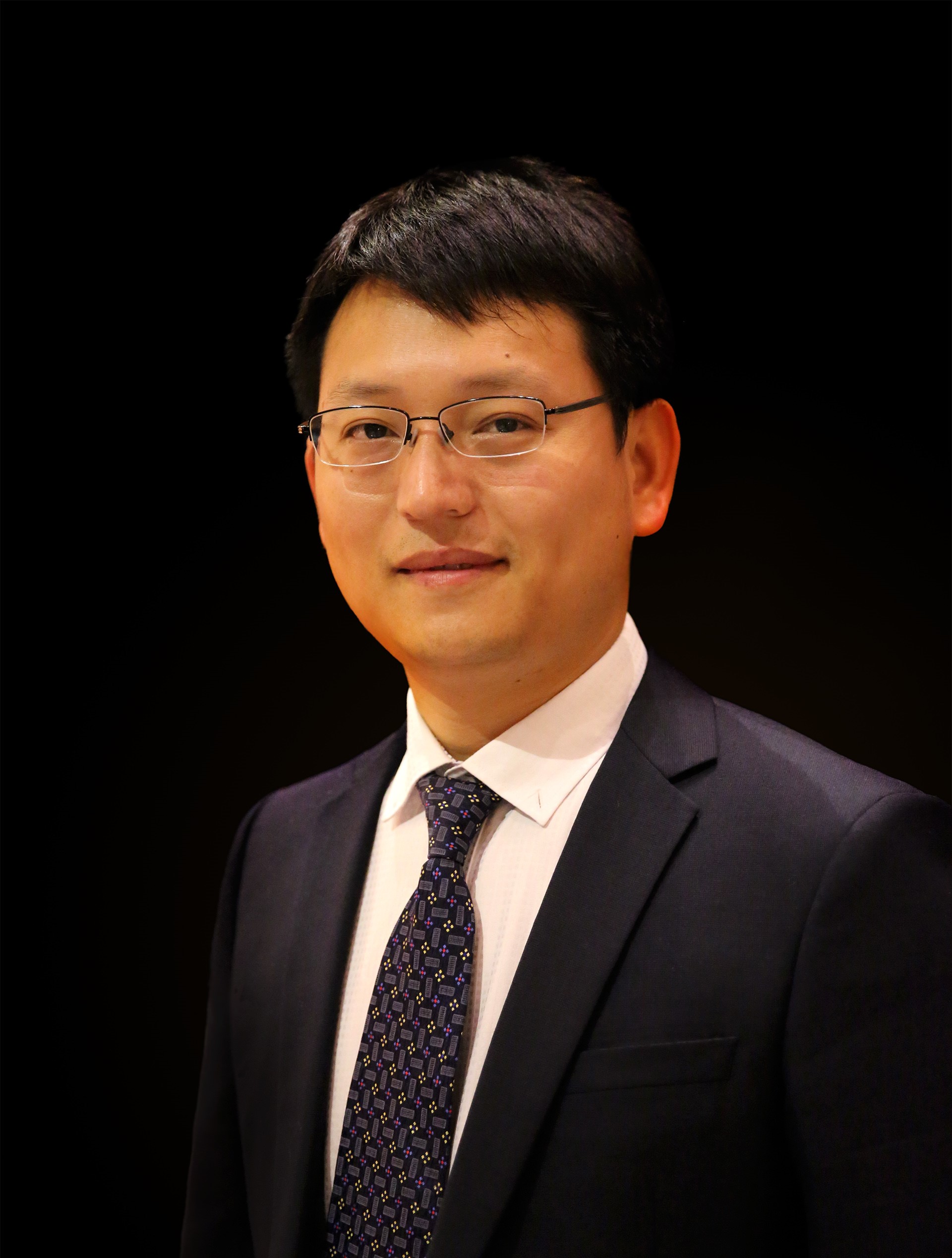
Lianqing Liu, Professor, Shenyang Institute of Automation, Chinese Academy of Sciences, China
Biosyncretic robotics for enhanced sensing, actuation and intelligence
Abstract: The Million years’ evolution makes the natural system has the super advantages that artificial system cannot achieve. Inspired by nature, biomimetic robotics has gotten rapid progress and achieve amazing breakthroughs. While, the natural system is too elegant to be fully reproduced through biomimetic way. How to further improve the performance of robot and even surpass the natural system is the hot topic. In this talk, a new concept called biosyncretic robotics will be introduced. The basic idea is developing robotics through the combination of electromechanical system and biosystem. The combination here is not a simple imitation or simulation of biological structures, functions or working principles for electromechanical systems in the sense of biomimetics, but a deep syncretism of life systems and electromechanical systems at the molecular and cellular scale. The model presented herein will promote the robot functions and achieves the transformation of functional carrier from nonliving artificial system to life medium. We wish this potential breakthrough will pave the way for the development of new generation of robots.
Biography: Lianqing Liu received his Ph.D. degree in Pattern Recognition and Intelligent System from university of Chinese Academy of Sciences, China in 2008, and B.S. degree in Industry Automation from Zhengzhou University, China in 2002. He started his career in 2006 at Shenyang Institute of Automation, Chinese Academy of Sciences, and holds the position of Assistant Professor (2006-2008), Associate Professor (2009-2010) and Professor (2011 to now) respectively.
Currently his research interests include Biosyncretic systems, Micro/Nanorobotics, Intelligent control. He has published over 100 peer reviewed international journal papers and led more than 20 funded research projects as Principal Investigator. He was awarded the Early Career Award by the IEEE Robotics and Automation Society in 2011, Outstanding Young Scientist of Chinese Academy of Sciences in 2014, Rising Star Award of 3M-Nano Society in 2015, Talent Young Scholar Funds of NSFC in 2015, National Program for support of Top-Notch Young Professionals in 2015, Distinguished Young Scholar Funds of NSFC in 2019. He is the winner of Best Student/Conference paper Award for ROBIO, IEEE-NANOMED and IEEE-3M-NANO, and delivered plenary/Keynote talks at IROS, IEEE-NANO, IEEE-NANOMED, IEEE-NEMS, ICIUS, MARSS and so on. He has served as guest editor for IEEE TNANO, Sensors, TIMC, Journal of automous robotics, Journal of Healthcare Engineering,associate editor of Mechtroncis, IET Cyber-Systems and Robotics. He has been elected as the vice president of IEEE Robotics and Automation Society for the term of 2018-2019, served as a member of long range planning committee of RAS.
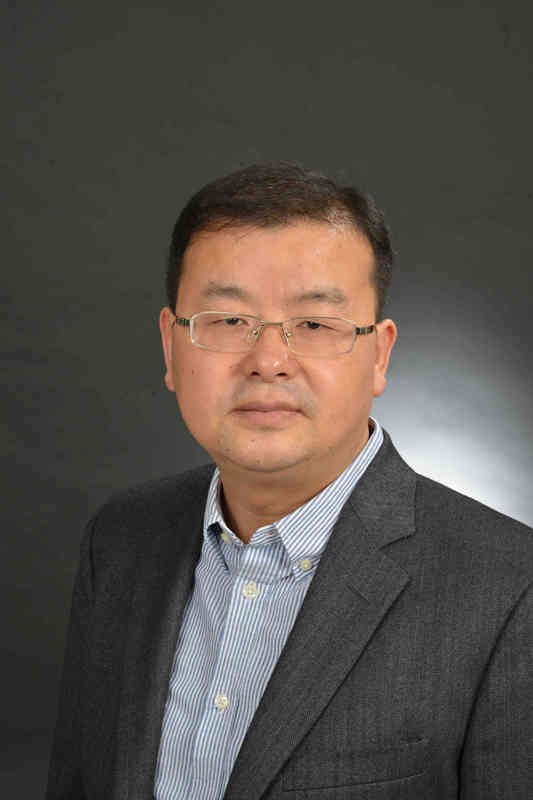
Jianru Xue, Professor, Xi’an Jiaotong University, China
Driving decision-making-a hybrid-augmented intelligent approach
Abstract: Autonomous driving may become a reality in 2020s. However, driving decision-making is still thought as one of the most challenging problems in the field of intelligent vehicles. In this talk, I will discuss this problem from two aspects: autonomous driving and human driver in the loop of the automated driving system. In particular, challenging problems including perception and motion planning are discussed. I will also introduce recent research theme undertaken in our group.
Biography: His research interests include computer vision and pattern recognition, machine learning, and autonomous driving. He and his team won the IEEE ITSS Institute Lead Award in 2014, and the Best Application Paper Award in Asian Conference on Computer Vision 2012. He is co-author of the book Statistical Learning and Pattern Analysis approaches to Image and Video Processing,published by Springer-verlag in 2009. He has published 100+ papers in top cited journals and conferences including IEEE TPAMI, IEEE TIP, CVPR, ICCV, ICRA, IROS, etc. He had severed as organization chair or co-chair of 10+ international conferences. He also served on the technical program committee and area chairs of peer-reviewed conferences including CVPR, ICCV,IROS, and so on.
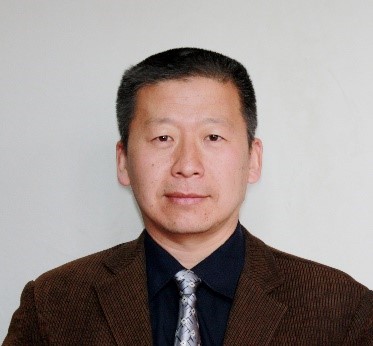
Yongde Zhang, Professor, Harbin University of Science and Technology, China
Precise puncture strategy of prostate radioactive seed implantation robot
Abstract: As its targetability, small trauma, quick curative effect, less side effects, seed implantation brachytherapy has become a common-used treatment for prostate cancer. The use of robotic system to assist doctors, can improve the accuracy of seed implantation, enhance the patient’s treatment effect, reduce the surgeon labor intensity and infection.
A prototype for seed implantation is presented. The algorithm of the acceleration and deceleration of the robot joint and the improved closed-loop control algorithm are studied. An implantation planning method based on safe plane operation is proposed. Based on the three steps of the safe plane operation strategy, the shortest path search using Hopfield neural network and the 6-step circular and automatic seed implantation program, a safe and reliable man-machine intelligent PC control software of prostate seed implantation robot is designed.
In order to improve the positioning accuracy of the robot to control the puncture needle, a piezoelectric vibration and rotation puncture device is designed and developed. A strategy of high accuracy mixed puncture is proposed, and the corresponding control software about puncture strategy is designed. A gravity torque compensation device of cross layout spring is designed, and its effectiveness is proved by the compensation distribution simulation and experiment. In order to realize the accurate tracking of the desired position and velocity, a sliding mode robust control method based on gravity torque and fuzzy friction torque compensation is proposed.
Finally, the puncture force evaluation experiment is completed by the proposed accuracy puncture strategy, and the experimental results validate the effectiveness of the methods.
Biography: Prof. Yongde Zhang graduated from Harbin Institute of Technology in 1999, majoring in mechanical design and theory, and obtained his Doctor’s Degree in Engineering. In 2001, he completed postdoctoral research from Beijing Institute of Technology. He is a doctoral supervisor and the director of Robotics Research Center, Harbin University of Science and Technology. He served as a common member of the council of Robot Committee of China Mechatronics Association and vice president of Heilongjiang Robot Technology Industry Innovation Strategic Alliance.
He has worked in City University of Hong Kong, University of Rochester Medical Center, and Nanyang Polytechnic University of Singapore. He has presided over and completed National Natural Science Foundation projects, National 863 Program projects and key projects of Natural Science Foundation of Heilongjiang Province. At present, his main research fields include prostate seed implantation, breast intervention in MRI environment, dental medical robot and flexible needle intervention and control.
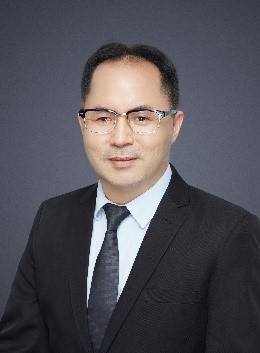
Yuanqing Xia, Professor, Beijing Institute of Technology, China
Nonlinear control design for robotic systems subjected to constraints
Abstract: Constraints widely exist in robot systems, such as actuator saturation, velocity limit, tracking error constraints and so on. How to implement the constrained control of robots is one of the key challenges in robot application and control theory. In the past decades, many advanced control methods have been developed to improve the control performance of robot systems with constraints.
In this talk, we will introduce the specific application of these methods. Specifically, the finite time control is developed to improve tracking rapidity. The predefined performance control is proposed to guarantee both transient and steady-state performance. The anti-saturation control method is used to improve the performance in the presence of input saturation constraints. The model predictive control is investigated to improve the ability to deal with multiple constraints.
Biography: Yuanqing Xia graduated from the Department of Mathematics, Chuzhou University, China in 1991. He received a MSc in Fundamental Mathematics from Anhui University, China, in 1998, and a PhD in Control Theory and Control Engineering from Beijing University of Aeronautics and Astronautics, China, in 2001. From 1991 to 1995 he was with Tongcheng Middle-School, China, where he worked as a teacher. From January 2002 to November 2003 he was a postdoctoral research associate at the Institute of Systems Science, Academy of Mathematics and System Sciences, Chinese Academy of Sciences, China, where he worked on navigation, guidance, and control. From November 2003 to February 2004 he was with the National University of Singapore as a Research Fellow, where he worked on variable structure control. From February 2004 to February 2006 he was with the University of Glamorgan, UK, as a Research Fellow, where he studied networked control systems. From February 2007 to June 2008 he was a guest professor with Innsbruck Medical University, Austria, where he worked on biomedical signal processing. Since July 2004 he has been with the School of Automation, Beijing Institute of Technology, Beijing, first as an Associate Professor and then since 2008 as Professor. In 2012 he was appointed Xu Teli Distinguished Professor at the Beijing Institute of Technology, and then in 2016 he was made Chair Professor. In 2012 he obtained the National Science Foundation for Distinguished Young Scholars of China; in 2016 he was honored as the Yangtze River Scholar Distinguished Professor and was supported by the National High Level Talents Special Support Plan (“Million People Plan”) by the Organization Department of the CPC Central Committee.
He is now the Dean of the School of Automation, Beijing Institute of Technology. He has published twelve monographs in Springer, John Wiley, and CRC, and more than 400 papers in international scientific journals. He is a deputy editor of the Journal of Beijing Institute of Technology and an associate editor of Acta Automatica Sinica; Control Theory and Applications; the International Journal of Innovative Computing, Information, and Control; and the International Journal of Automation and Computing. He obtained the Second Award of the Beijing Municipal Science and Technology (No. 1) in 2010 and 2015, the Second National Award for Science and Technology (No. 2) in 2011, and the Second Natural Science Award of the Ministry of Education (No. 1) in 2012 and 2017. His research interests include cloud control systems, networked control systems, robust control and signal processing, active disturbance rejection control, unmanned system control and flight control.
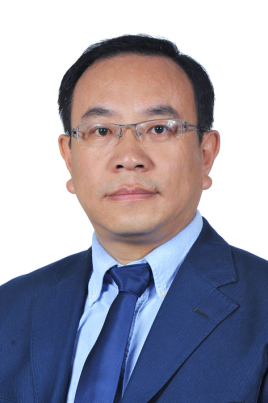
Hong Liu, Professor, Peking University, China
New generation AI technology for public service robots
Abstract: The report will thoroughly analyze the three laws of human tool development, and put forward the main idea that intelligent robots are the highest stage of human tool development. By comparing the technology and industry development trend of industrial robots, special robots and service robots, the importance of developing public service robots will be pointed out. This report will also discuss the applications of new generation artificial intelligence technology in the intelligent shopping guide robot systems.
Biography: Hong Liu, a professor of Peking University, and an expert in the field of robot vision. He is a leading talent of the “Ten Thousand Talent Program”. He is also an expert of the overall expert group of “intelligent robot”, which is a national key research and development plan of the “13th Five-Year Plan”. He serves as the vice President of China Artificial Intelligence Society, the President of Chongqing Liangjiang Artificial Intelligence Institute, and a member of the CPPCC of Shenzhen.
| Tianyou Chai | Development directions of industrial artificial intelligence | Saturday December 19, 08:50-09:30 |
| Guangren Duan | Tracking control in satellite optical communication — A parametric comprehensive design | Saturday December 19, 09:30-10:10 |
| Bin Jiang | Adaptive fault detection and accommodation with flight control applications | Saturday December 19, 10:20-10:50 |
| Hong Qiao | Brain-inspired intelligent robotics | Saturday December 19, 10:50-11:20 |
| Hong Liu | New generation AI technology for public service robots | Saturday December 19, 11:20-11:50 |
| C. L. Philip Chen | Stacked broad learning system: from incremental flatted structure to deep model | Sunday December 20, 08:30-09:00 |
| Jianru Xue | Driving decision-making-a hybrid-augmented intelligent approach | Sunday December 20, 09:00-09:30 |
| Yuanqing Xia | Nonlinear control design for robotic systems subjected to constraints | Sunday December 20, 09:30-10:00 |
| Lianqing Liu | Biosyncretic robotics for enhanced sensing, actuation and intelligence | Sunday December 20, 10:10-10:40 |
| Yongde Zhang | Precise puncture strategy of prostate radioactive seed implantation robot | Sunday December 20, 10:40-11:10 |
| Gary G. Yen | Knee-driven optimization and desion-making in evolutionary neural architecture search | Sunday December 20, 11:10-11:40 |
Tianyou Chai, Professor, Northeastern University, China
Development directions of industrial artificial intelligence
Abstract: In this talk, the necessity of developing industrial artificial intelligence is proposed, by combining the role of industrial automation and information technology in the industrial revolution and the analysis of the current situation of decision-making, control, and operation management in the entire manufacturing and production process as well as the development direction of intelligent development. Then, the concept of industrial artificial intelligence technology is presented through the analysis of the meaning, development history and development direction of artificial intelligence technology, as well as the comparative analysis on the similarity and difference in core objectives, implementation methods, research objects, and research methods of automation and artificial intelligence research and application. Moreover, the directions, ideas and methods of research on industrial artificial intelligence are proposed through the comparative analysis on research objects and objectives of industrial artificial intelligence and industrial automation.
Biography: Tianyou Chai received the Ph.D. degree in control theory and engineering in 1985 from Northeastern University, Shenyang, China, where he became a Professor in 1988. He is the founder and Director of the Center of Automation, which became a National Engineering and Technology Research Center and a State Key Laboratory. He is a member of Chinese Academy of Engineering, IFAC Fellow and IEEE Fellow. He has served as director of Department of Information Science of National Natural Science Foundation of China from 2010 to 2018. His current research interests include modeling, control, optimization and integrated automation of complex industrial processes. He has published 240 peer reviewed international journal papers. His paper titled Hybrid intelligent control for optimal operation of shaft furnace roasting process was selected as one of three best papers for the Control Engineering Practice Paper Prize for 2011-2013. He has developed control technologies with applications to various industrial processes. For his contributions, he has won 5 prestigious awards of National Natural Science, National Science and Technology Progress and National Technological Innovation, the 2007 Industry Award for Excellence in Transitional Control Research from IEEE Multiple-conference on Systems and Control, and the 2017 Wook Hyun Kwon Education Award from Asian Control Association.
Bin Jiang, Professor, Nanjing University of Aeronautics and Astronautics, China
Adaptive fault detection and accommodation with flight control applications
Abstract: Based on the background of the flight control systems, this talk focuses on the topic of adaptive fault accommodation for complex dynamic systems, and introduces a series of results of fault detection, estimation and accommodation for continuous time, discrete time and hybrid systems. Their applications on the hot issues of satellites, near space vehicles, helicopters are discussed. Some perspectives along this direction are provided.
Biography: Bin Jiang received the Ph.D. degree in Automatic Control from Northeastern University, Shenyang, China, in 1995. He had ever been postdoctoral fellow, research fellow, invited professor and visiting professor in Singapore, France, USA and Canada, respectively. Now he is a Chair Professor of Cheung Kong Scholar Program in Ministry of Education and Vice President in Nanjing University of Aeronautics and Astronautics, China. He has served as Associate Editor or Editorial Board Member for a number of journals such as IEEE Trans. On Cybernetics, IEEE Trans. On Control Systems Technology; Neurocomputing, J. of Franklin Institute, etc. He is a Fellow of IEEE, Chair of Control Systems Chapter in IEEE Nanjing Section, a member of IFAC Technical Committee on Fault Detection, Supervision, and Safety of Technical Processes. His research interests include intelligent fault diagnosis and fault tolerant control and their applications to helicopters, satellites and high-speed trains. He has been the principle investigator on several projects of National Natural Science Foundation of China. He is the author of 8 books and over 200 referred international journal papers and conference papers. He won National Natural Science Award of China in 2018.
C. L. Philip Chen, Professor, South China University of Technology, China
Stacked broad learning system: from incremental flatted structure to deep model
Abstract: The Broad Learning System has been proved to be effective and efficient lately. In this talk, several deep variants of Broad Learning System (BLS) are reviewed, and a new adaptive incremental structure, Stacked Broad Learning System, is proposed. The proposed model is a novel incremental stacking of Broad Learning Systems. This invariant inherits the efficiency and effectiveness of Broad Learning System that the structure and weights of lower layers of Broad Learning Systems are fixed when the new blocks are added. The modified incremental stacking algorithm computes not only the connection weights between the new stacking blocks but also the connection weights of the enhancement nodes within the BLS block. Finally, experimental results on UCI datasets, MNIST dataset, NORB dataset, CIFAR-10 dataset, SVHN dataset, and CIFAR-100 dataset indicate that the proposed method outperforms the other state-of-the-art methods on both accuracy and training speed, such as Deep Residual Networks. The results also imply that the proposed structure could highly reduce the number of nodes and the training time of the original Broad Learning System in the classification task of some datasets.
Biography: C. L. Philip Chen (S’88–M’88–SM’94–F’07) is the Chair Professor and Dean of the College of Computer Science and Engineering, South China University of Technology and is a Chair Professor of the Faculty of Science and Technology, University of Macau, where he was the former Dean (2010-2017). He is a Fellow of IEEE, AAAS, IAPR, CAA, and HKIE; a member of Academia Europaea (AE), European Academy of Sciences and Arts (EASA). He received IEEE Norbert Wiener Award in 2018 for his contribution in systems and cybernetics, and machine learnings. He was a recipient of the 2016 Outstanding Electrical and Computer Engineers Award from his alma mater, Purdue University. He received IEEE Transactions on Neural Networks and Learning Systems best transactions paper award two times for his papers in 2014 and 2018, Franklin Taylor best conference award in IEEE Int’l Conf. on SMC 2019. He is a highly cited researcher by Clarivate Analytics in 2018, 2019, and 2020. His current research interests include cybernetics, systems, and computational intelligence. Currently, he is the Editor-in-Chief of the IEEE Transactions on Cybernetics. He was the IEEE Systems, Man, and Cybernetics Society President from 2012 to 2013, the Editor-in-Chief of the IEEE Transactions on Systems, Man, and Cybernetics: Systems (2014-2019), an Associate Editor of the IEEE Transactions on AI, IEEE Trans on SMC: Systems, and IEEE Transactions on Fuzzy Systems. He received Macau FDCT Natural Science Award three times, Guaungdong Province Scientific and Technology Advancement Award in first-class in 2019.
Hong Qiao, Professor, Institute of Automation, Chinese Academy of Sciences, China
Brain-inspired intelligent robotics
Abstract: Brain-inspired intelligence has become an important cutting edge of artificial intelligence. In recent years, many countries have launched brain projects and also established brain-inspired research centers. The interdisciplinary research between robotics and neuroscience will play an important role in the development of robotics, especially in “human-like” (intelligence, learning ability, flexibility and compliance in manipulation) and “interaction” (deeply understanding human motion and emotion, cooperating with human in a close and intimate manner) aspects. Based on biological mechanisms, structures and functions, we carried out research activities in the integration of three main directions in robotics: (1) Brain-inspired perception and cognition: Introducing “memory and association”, “active cognition adjustment” and “spontaneous and dynamical cognition” into computational visual cognition models, the new models could achieve robust cognition, higher level cognition and dynamic updating, which could extend the applicable scenarios of robotic cognition, and provide basis of personalized services of robots. (2) Brain-inspired decision: Introducing neural mechanism of instinctive reactions into decision-making system, which could establish the trade-off between fast and slow reaction, and improve the precision of the movement and learning ability of robots. (3) human-like structure and brain-inspired control: human-like musculoskeletal robotic system provides stronger reliability, flexibility, and robustness than conventional robots. By introducing brain-inspired control mechanism into the system, it could perform human-like higher-level motion capacities.
Biography: Hong Qiao is deputy director of State Key Laboratory of Management and Control for Complex Systems, the group leader of Robotic Theory and Application (more than 50 researchers) in Institute of Automation, CAS. She is Winner of National Natural Science Funds for Distinguished Young Scholar, IEEE Fellow, IEEE Award Board Member and IEEE RAS AdCom Member. Prof. Qiao has made excellent contributions to interdisciplinary research between robotics and other areas and also among different directions in robotic area. She is an internationally-recognized and highly-cited pioneer researcher in high-precision robotic manipulation and biologically-inspired robotic cognition and manipulation. Her contributions are evidenced by more than 230 international journal and conference papers (150 SCI Indexed) with 2900+ total citation and H-Index of 28, and 56 patents. Her theory of “Attractive Region in Environment (ARIE)” —reported as “Qiao’s Concept” —has been widely applied in industrial robots in China. She was awarded Second Prize of the National Natural Science Award (the highest fundamental research award in China) in 2014. She also serves as AEs of 6 IEEE Transactions and Editor-in-chief of Assembly Automation (SCI). She established three industrialization bases in China for robotic assembly and detection. Some of the products became standardized and achieved best seller in local market. The base in Huizhou also got rewarded as New-type R & D institutions by local government.
Gary G. Yen, Professor, Oklahoma State University, USA
Knee-driven optimization and desion-making in evolutionary neural architecture search
Abstract: Evolutionary computation is a branch of studying biologically motivated computational paradigms which exert novel ideas and inspiration from natural evolution and adaptation. The applications of population-based meta-heuristics in solving multiobjective optimization problems have been receiving a growing attention. To search for a family of Pareto optimal solutions based on nature-inspiring metaphors, Evolutionary Multiobjective Optimization Algorithms have been successfully exploited to solve optimization problems in which the fitness measures and even constraints are uncertain and changed over time. When encounter optimization problems with many objectives, nearly all designs perform poorly because of loss of selection pressure in fitness evaluation solely based upon Pareto optimality principle. During the last years, evolutionary algorithms have been adapted to address these challenges of curse of dimensionality. In addition, a minimum Manhattan distance approach to multiple criteria decision making in many-objective optimization problems was proposed. This procedure is equivalent to the knee selection in operation research. Given such a directive, knee-based evolutionary algorithms have also been exploited to address multimodal optimization, dynamic optimization, constraint optimization, robust optimization, and their applications in medical screening, portfolio management, and most recently the design of convolutional neural networks autonomously. In this talk, focal research on evolutionary neural architecture search will be detailed pertaining to the interest of audience.
Biography: Gary G. Yen received the Ph.D. degree in electrical and computer engineering from the University of Notre Dame in 1992. He is currently a Regents Professor in the School of Electrical and Computer Engineering, Oklahoma State University. His research interest includes intelligent control, computational intelligence, evolutionary multiobjective optimization, conditional health monitoring, signal processing and their industrial/defense applications. He has published over 175 journal papers, mostly in IEEE Transactions. Gary was an associate editor of the IEEE Transactions on Neural Networks and IEEE Control Systems Magazine during 1994-1999, and of the IEEE Transactions on Control Systems Technology, IEEE Transactions on Systems, Man and Cybernetics (Parts A and B) and IFAC Journal on Automatica and Mechatronics during 2000-2010. He is currently serving as an associate editor for the IEEE Transactions on Evolutionary Computation (Impact Factor 11.169), IEEE Transactions on Cybernetics (Impact Factor 11.079), IEEE Transactions on Emerging Topics on Computational Intelligence, and most recently IEEE Transactions on Artificial Intelligence. Gary served as Vice President for the Technical Activities, IEEE Computational Intelligence Society in 2004-2005 and was the founding editor-in-chief of the IEEE Computational Intelligence Magazine, 2006-2009. He was elected to serve as the President of the IEEE Computational Intelligence Society in 2010-2011 and is elected as a Distinguished Lecturer for the term 2012-2014, 2016-2018, and 2021-2023. He received Regents Distinguished Research Award from OSU in 2009, 2011 Andrew P Sage Best Transactions Paper award from IEEE Systems, Man and Cybernetics Society, 2013 Meritorious Service award from IEEE Computational Intelligence Society and 2014 Lockheed Martin Aeronautics Excellence Teaching award. He is a Fellow of IEEE and IET.
Guangren Duan, Professor, Harbin Institute of Technology, China
Tracking control in satellite optical communication — A parametric comprehensive design
Abstract: Accurate tracking and alignment control systems play a vital role in satellite optical communications. China’s completed Mozi quantum science experimental satellite uses a tracking and aiming system based on the classical follow-up system design, and achieved a satisfactory effect in practice. Space quantum communication application for farther distance in the future puts forward higher precision requirements for the aiming and tracking system, which maybe difficult to meet using the traditional control method again. Due to this consideration, a parametric design method for the aiming system is proposed. Instead of designing the fine and coarse systems separately using the traditional methods, the proposed method designs the two-stage subsystems integratedly. By comprehensively optimizing the design degrees of freedom, the system meets several design objectives and significantly improves the alignment accuracy. Simulation results show that the alignment accuracy is improved from the original micro-arc metric to the nano-arc metric.
Biography: Guang-Ren Duan, received his Ph.D. degree in Control Systems Sciences from Harbin Institute of Technology, Harbin, P. R. China, in 1989. After a two-year post-doctoral experience at the same university, he became professor of control systems theory at that university in 1991. He is the founder and currently the Director of the Center for Control Theory and Guidance Technology at Harbin Institute of Technology. He visited the University of Hull, the University of Sheffield, and also the Queen’s University of Belfast, UK, from December 1996 to October 2002, and has served as Member of the Science and Technology committee of the Chinese Ministry of Education, Vice President of the Control Theory and Applications Committee, Chinese Association of Automation (CAA), and Associate Editors of a few international journals. He is currently an Academician of the Chinese Academy of sciences, and Fellow of CAA, IEEE and IET. His main research interests include parametric control systems design, nonlinear systems, descriptor systems, spacecraft control and magnetic bearing control. He is the author and co-author of 5 books and over 270 SCI indexed publications.
Lianqing Liu, Professor, Shenyang Institute of Automation, Chinese Academy of Sciences, China
Biosyncretic robotics for enhanced sensing, actuation and intelligence
Abstract: The Million years’ evolution makes the natural system has the super advantages that artificial system cannot achieve. Inspired by nature, biomimetic robotics has gotten rapid progress and achieve amazing breakthroughs. While, the natural system is too elegant to be fully reproduced through biomimetic way. How to further improve the performance of robot and even surpass the natural system is the hot topic. In this talk, a new concept called biosyncretic robotics will be introduced. The basic idea is developing robotics through the combination of electromechanical system and biosystem. The combination here is not a simple imitation or simulation of biological structures, functions or working principles for electromechanical systems in the sense of biomimetics, but a deep syncretism of life systems and electromechanical systems at the molecular and cellular scale. The model presented herein will promote the robot functions and achieves the transformation of functional carrier from nonliving artificial system to life medium. We wish this potential breakthrough will pave the way for the development of new generation of robots.
Biography: Lianqing Liu received his Ph.D. degree in Pattern Recognition and Intelligent System from university of Chinese Academy of Sciences, China in 2008, and B.S. degree in Industry Automation from Zhengzhou University, China in 2002. He started his career in 2006 at Shenyang Institute of Automation, Chinese Academy of Sciences, and holds the position of Assistant Professor (2006-2008), Associate Professor (2009-2010) and Professor (2011 to now) respectively. Currently his research interests include Biosyncretic systems, Micro/Nanorobotics, Intelligent control. He has published over 100 peer reviewed international journal papers and led more than 20 funded research projects as Principal Investigator. He was awarded the Early Career Award by the IEEE Robotics and Automation Society in 2011, Outstanding Young Scientist of Chinese Academy of Sciences in 2014, Rising Star Award of 3M-Nano Society in 2015, Talent Young Scholar Funds of NSFC in 2015, National Program for support of Top-Notch Young Professionals in 2015, Distinguished Young Scholar Funds of NSFC in 2019. He is the winner of Best Student/Conference paper Award for ROBIO, IEEE-NANOMED and IEEE-3M-NANO, and delivered plenary/Keynote talks at IROS, IEEE-NANO, IEEE-NANOMED, IEEE-NEMS, ICIUS, MARSS and so on. He has served as guest editor for IEEE TNANO, Sensors, TIMC, Journal of automous robotics, Journal of Healthcare Engineering,associate editor of Mechtroncis, IET Cyber-Systems and Robotics. He has been elected as the vice president of IEEE Robotics and Automation Society for the term of 2018-2019, served as a member of long range planning committee of RAS.
Jianru Xue, Professor, Xi’an Jiaotong University, China
Driving decision-making-a hybrid-augmented intelligent approach
Abstract: Autonomous driving may become a reality in 2020s. However, driving decision-making is still thought as one of the most challenging problems in the field of intelligent vehicles. In this talk, I will discuss this problem from two aspects: autonomous driving and human driver in the loop of the automated driving system. In particular, challenging problems including perception and motion planning are discussed. I will also introduce recent research theme undertaken in our group.
Biography: His research interests include computer vision and pattern recognition, machine learning, and autonomous driving. He and his team won the IEEE ITSS Institute Lead Award in 2014, and the Best Application Paper Award in Asian Conference on Computer Vision 2012. He is co-author of the book Statistical Learning and Pattern Analysis approaches to Image and Video Processing,published by Springer-verlag in 2009. He has published 100+ papers in top cited journals and conferences including IEEE TPAMI, IEEE TIP, CVPR, ICCV, ICRA, IROS, etc. He had severed as organization chair or co-chair of 10+ international conferences. He also served on the technical program committee and area chairs of peer-reviewed conferences including CVPR, ICCV,IROS, and so on.
Yongde Zhang, Professor, Harbin University of Science and Technology, China
Precise puncture strategy of prostate radioactive seed implantation robot
Abstract: As its targetability, small trauma, quick curative effect, less side effects, seed implantation brachytherapy has become a common-used treatment for prostate cancer. The use of robotic system to assist doctors, can improve the accuracy of seed implantation, enhance the patient’s treatment effect, reduce the surgeon labor intensity and infection. A prototype for seed implantation is presented. The algorithm of the acceleration and deceleration of the robot joint and the improved closed-loop control algorithm are studied. An implantation planning method based on safe plane operation is proposed. Based on the three steps of the safe plane operation strategy, the shortest path search using Hopfield neural network and the 6-step circular and automatic seed implantation program, a safe and reliable man-machine intelligent PC control software of prostate seed implantation robot is designed. In order to improve the positioning accuracy of the robot to control the puncture needle, a piezoelectric vibration and rotation puncture device is designed and developed. A strategy of high accuracy mixed puncture is proposed, and the corresponding control software about puncture strategy is designed. A gravity torque compensation device of cross layout spring is designed, and its effectiveness is proved by the compensation distribution simulation and experiment. In order to realize the accurate tracking of the desired position and velocity, a sliding mode robust control method based on gravity torque and fuzzy friction torque compensation is proposed. Finally, the puncture force evaluation experiment is completed by the proposed accuracy puncture strategy, and the experimental results validate the effectiveness of the methods.
Biography: Prof. Yongde Zhang graduated from Harbin Institute of Technology in 1999, majoring in mechanical design and theory, and obtained his Doctor’s Degree in Engineering. In 2001, he completed postdoctoral research from Beijing Institute of Technology. He is a doctoral supervisor and the director of Robotics Research Center, Harbin University of Science and Technology. He served as a common member of the council of Robot Committee of China Mechatronics Association and vice president of Heilongjiang Robot Technology Industry Innovation Strategic Alliance. He has worked in City University of Hong Kong, University of Rochester Medical Center, and Nanyang Polytechnic University of Singapore. He has presided over and completed National Natural Science Foundation projects, National 863 Program projects and key projects of Natural Science Foundation of Heilongjiang Province. At present, his main research fields include prostate seed implantation, breast intervention in MRI environment, dental medical robot and flexible needle intervention and control.
Yuanqing Xia, Professor, Beijing Institute of Technology, China
Nonlinear control design for robotic systems subjected to constraints
Abstract: Constraints widely exist in robot systems, such as actuator saturation, velocity limit, tracking error constraints and so on. How to implement the constrained control of robots is one of the key challenges in robot application and control theory. In the past decades, many advanced control methods have been developed to improve the control performance of robot systems with constraints. In this talk, we will introduce the specific application of these methods. Specifically, the finite time control is developed to improve tracking rapidity. The predefined performance control is proposed to guarantee both transient and steady-state performance. The anti-saturation control method is used to improve the performance in the presence of input saturation constraints. The model predictive control is investigated to improve the ability to deal with multiple constraints.
Biography: Yuanqing Xia graduated from the Department of Mathematics, Chuzhou University, China in 1991. He received a MSc in Fundamental Mathematics from Anhui University, China, in 1998, and a PhD in Control Theory and Control Engineering from Beijing University of Aeronautics and Astronautics, China, in 2001. From 1991 to 1995 he was with Tongcheng Middle-School, China, where he worked as a teacher. From January 2002 to November 2003 he was a postdoctoral research associate at the Institute of Systems Science, Academy of Mathematics and System Sciences, Chinese Academy of Sciences, China, where he worked on navigation, guidance, and control. From November 2003 to February 2004 he was with the National University of Singapore as a Research Fellow, where he worked on variable structure control. From February 2004 to February 2006 he was with the University of Glamorgan, UK, as a Research Fellow, where he studied networked control systems. From February 2007 to June 2008 he was a guest professor with Innsbruck Medical University, Austria, where he worked on biomedical signal processing. Since July 2004 he has been with the School of Automation, Beijing Institute of Technology, Beijing, first as an Associate Professor and then since 2008 as Professor. In 2012 he was appointed Xu Teli Distinguished Professor at the Beijing Institute of Technology, and then in 2016 he was made Chair Professor. In 2012 he obtained the National Science Foundation for Distinguished Young Scholars of China; in 2016 he was honored as the Yangtze River Scholar Distinguished Professor and was supported by the National High Level Talents Special Support Plan (“Million People Plan”) by the Organization Department of the CPC Central Committee. He is now the Dean of the School of Automation, Beijing Institute of Technology. He has published twelve monographs in Springer, John Wiley, and CRC, and more than 400 papers in international scientific journals. He is a deputy editor of the Journal of Beijing Institute of Technology and an associate editor of Acta Automatica Sinica; Control Theory and Applications; the International Journal of Innovative Computing, Information, and Control; and the International Journal of Automation and Computing. He obtained the Second Award of the Beijing Municipal Science and Technology (No. 1) in 2010 and 2015, the Second National Award for Science and Technology (No. 2) in 2011, and the Second Natural Science Award of the Ministry of Education (No. 1) in 2012 and 2017. His research interests include cloud control systems, networked control systems, robust control and signal processing, active disturbance rejection control, unmanned system control and flight control.
Hong Liu, Professor, Peking University, China
New generation AI technology for public service robots
Abstract: The report will thoroughly analyze the three laws of human tool development, and put forward the main idea that intelligent robots are the highest stage of human tool development. By comparing the technology and industry development trend of industrial robots, special robots and service robots, the importance of developing public service robots will be pointed out. This report will also discuss the applications of new generation artificial intelligence technology in the intelligent shopping guide robot systems.
Biography: Hong Liu, a professor of Peking University, and an expert in the field of robot vision. He is a leading talent of the “Ten Thousand Talent Program”. He is also an expert of the overall expert group of “intelligent robot”, which is a national key research and development plan of the “13th Five-Year Plan”. He serves as the vice President of China Artificial Intelligence Society, the President of Chongqing Liangjiang Artificial Intelligence Institute, and a member of the CPPCC of Shenzhen.
 跳转到内容
跳转到内容 


